
COPENHAGEN, June 25 (Xinhua) -- Danish farmers make every possible effort and constantly strive to ensure high food safety and good animal health, which is the recipe for success of Danish pig production.
Denmark, a small country with a population of only 5.5 million people, yet exports approximate 30 million pigs annually. The production of pigs and pork has been a major income source for Denmark in the international trade for over 100 years. The Danish pork is well known for high safety and good quality in the global market.
"Producing safe food is not really anything new. It has always been the top priority for me," Michael Nielsen, a Danish farm owner said in a recent interview with Xinhua in his pig farm.
Nielsen owns an over-middle-sized pig farm some 40 km northwest of the downtown of Danish capital Copenhagen. Nielsen and his six employees take care of 800 sows, and he sells around 25,000 piglets every year.
"Every week I sell around 500 piglets to some finishing pig herds. 150 of these piglets are six weeks old and the rest of 350 piglets are three months old. Usually they are ready to be slaughtered at the age of 6 months," Nielsen said.
Nielsen said that he usually earn pre-tax 1 million kroner (around 180,000 U.S. dollars) a year. Even though he produces almost the same amount of piglets every week, there are still some risks of his pig business as the piglets' price fluctuates every week in accordance with the pork price in the domestic and international market.
"Every time when I check the price, it feels like playing the lottery. Those piglets are my fortune and hope. I make every effort to make sure that they are healthy and thriving," he said, holding a piglet tenderly in his arms.
DISEASE TOUGHLY PREVENTED AND CONTROLLED
Strict epidemic prevention and disease control is particularly vital for Nielsen to ensure the pigs' healthy and high safety. He believes that the production of safe food starts from the farm and the responsible way of farming.
"The most challenging thing for pig farms is to control disease. I am thinking about this all the time and under all occasions, for example, when I get visitors, when I send the pigs to the slaughter house, when I produce the feed and when I buy things for my farm," Nielsen said.
Nielsen has implemented strict safety procedures to manage all kinds of risks during all stages of the production process, making every possible effort to eliminate the potential risk of contamination.
"Even a tiny mistake can lead to a deadly disaster. It will take at least two years to replace the whole production and clean everything. I can not live for two years without any income." Nielsen added.
Nielsen is very proud to be a certified SPF farmer. SPF means Specific Pathogen Free and SPF pigs are free of diseases such as pleuropneumonia, mycoplasma, atrophic rhinitis, dysentery, mange and lice.
The Danish SPF system, established since 1971, represents the highest health level in Danish pig herds. The SPF certification means Nielsen's pigs are completely free from the listed SPF diseases. It means also that Nielsen is able to sell the piglets at a price of 10 percent higher than non-SPF piglets.
"I bought this farm 22 years ago. In the beginning, I grew the grains but it was not profitable. In 1998, I converted to pig farming. I've maintained my SPF status since then and I have made great efforts to keep it," Nielsen said.
As a certified SPF farmer, Nielsen has to follow the strict SPF rules for quarantine. Besides his herd is monitored at least once a month by veterinarians who carry out the clinical control of pigs and collect samples for serological and bacteriological examination of the listed SPF diseases.
"Any visitor to my herd has to have a quarantine period of 12 hours if he or she has visited a non-SPF herd before. This process is crucial to avoid contamination, even though it sometimes creates inconveniences for my veterinarians and advisors," he said.
In addition, visitors have to wear protective gowns and boots and precede the all-around cleaning and disinfection procedures before entering into the pigsty.
The pigsty is a fully-enclosed house so that the pigs are protected against wind, rain and snow. The design ensures that the pigs have necessary freedom of movement during intake of feed and water and when resting.
Farrowing sows are housed individually in specially designed pens where the piglets can get the maximum protection. All pregnant sows are housed in loose groups with a showering system, which helps the sows regulate their body temperature during warm weather. Weaners are housed in special units, where the temperature and air supply are adjusted to the needs of each age group.
All units of the farm follow strictly "all in-all out" principle and will be cleaned and disinfected carefully for each group of pigs in order to minimize the risk of disease transmission among different groups.
Further, when transporting the pigs, only the SPF trucks are allowed to drive into Nielsen's farm. Other truckers which have been used to transport other pigs have to park some distance away from his herd. Instead, Nielsen uses his own special trailer to transfer the pigs onto the trucks and disinfects the trailer afterwards.
HIGH-QUALITY FEED
Nielsen emphasized that the high-quality feed is another important factor to ensure high-safety pork.
In order to get the best quality feed, Nielsen cultivated 300 hectares of farm land around his hoggery to feed his pigs. About 80 percent of grains which he needs are actually from his own land and Nielsen buys the rest 20 percent from his neighbors.
"If you want to get the best piglets, you have to feed them with the best quality feed. These grains are produced by myself and my neighbors. I know the details of the whole production process and I am sure that they meet my requirements on feed quality."
Denmark has banned the use of antibiotics and growth promoters in feed for pigs since January 2000. To feed the pigs with enough nutrition and protein, Nielsen mixes the grains with soybean and vitamins. Considering the different nutritional and digestibility requirements for different age groups, he makes also various mixtures accordingly.
"In a total, I make six kinds of mixtures to feed my pigs. For the feed to the weaners, I add some fishmeal and milk powder to make it easy to digest," he said.
An automatic pig feeding system is applied in Nielsen's farm. All the pigs wear a yellow tag with a computer chip on the ear. When a pig comes to the feeding station, the station will scan the chip and dispense the right kind and amount of feed for that particular pig.
"This system has reduced significantly the amount of manual labor and given me possibilities to have an overview of pigs' healthy conditions. It is easier to identify the pig when it gets sick because that pig might eat less," he said.
Nielsen has adopted a sustainable recycling economy model. He grew the grains as the feed for the pigs and the pigs' manure is turned into fertilizer for the grains.
Every year, Nielsen is able to get 6 tonnes of the pigs' manure as the natural fertilizers, thereby reducing the need for chemical fertilizers.
"Of course I'm happy about that. It makes sound economic sense," Nielsen said.
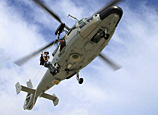

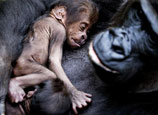
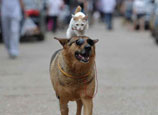

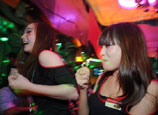



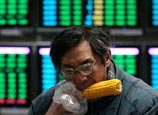








![]()
